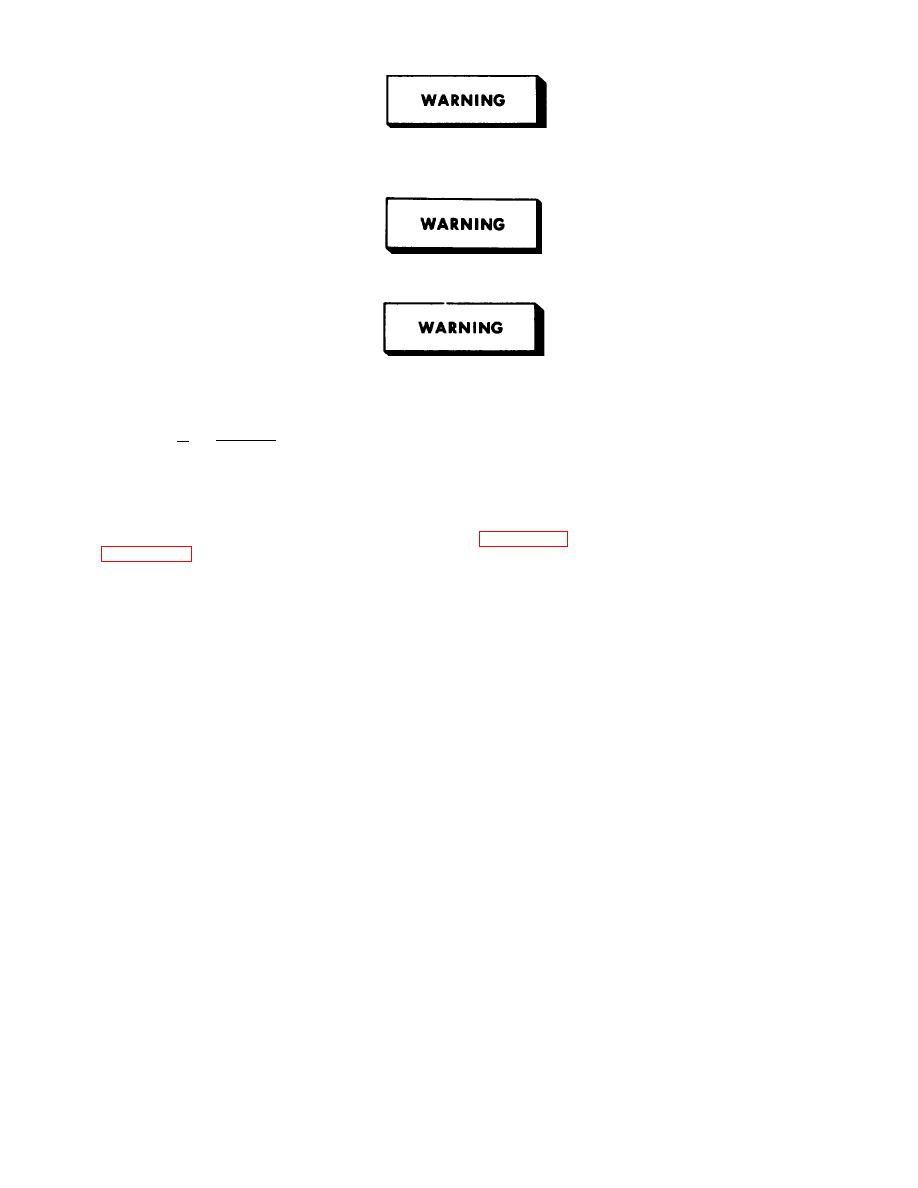 |
|||
|
|
|||
|
|
|||
| ||||||||||
|
|
 TM 5-4120-369-14
Brazing operations should be carried out using
approved eye protection equipment and rods not
containing cadmium.
Certain brazing operations may require mechanical
ventilation.
Local preventative maintenance personnel should be
ventilation requirement 9.
Brazing. Braze copper-to-copper joints with silver solder type 3, 4 or 6 A
c.
specification QQ-S-561) and copper-to-brass or copper-to-steel with type 4 or 6 A specification
QQ-S-561 per ML-B-7883. Solder melting point is 1160F (625C). All brazed or soldered
joints shall be made with an atmosphere of inert gas to prevent internal oxidation.
INSULATION AND GASKETS.
Replace damaged insulation and gaskets, (See appendix F) Cement loose insulation. (See
HARDWARE.
Replace any damaged screws, washers, lock washers or nuts. Use screws of correct length
to hold parts securely. In some applications screws that are too long may hit bottom before the
head is tight against part it is to hold or may cause damage to the threads or other parts.
SHIMS.
Be sure to remove all shims where used.
Keep shims together and identify them as to
location.
REPAIRING DAMAGED THREADS.
Damaged threads should be repaired by use of a thread restorer or by chasing in a lathe.
Internal threads should be repaired with a tap of the correct size. If threads cannot be satis-
factorily repaired, replace the part. Drill out and replace blind rivet nuts having defective
threads.
REPAIR OF DAMAGED MACHINED AND POLISHED SURFACES.
Smooth rough spots, scores, burrs, galling, and guages from damaged machines and polished
surfaces so that part will efficiently perform its normal function. The finish of the repaired part
is to approximate that of the original finish. In performing any of these operations, critical
dimensions must not be altered.
REMOVAL OF RUST OR CORROSION.
Remove corrosion from all parts of material. `Co remove rust or corrosion, use wire brush,
abrasive cloth, or rust remover except on highly polished surfaces. On these surfaces, buffing
or the use of crocus cloth is recommended.
|
|
Privacy Statement - Press Release - Copyright Information. - Contact Us |